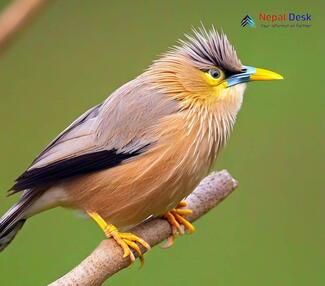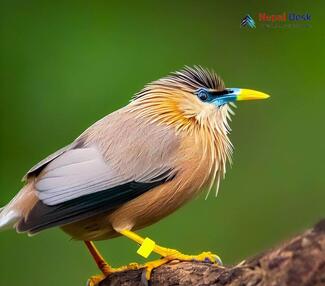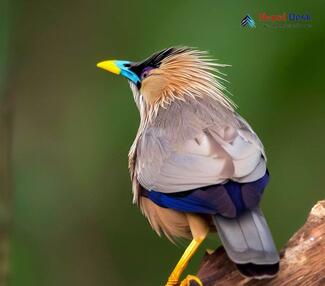Nestled amidst the scenic beauty of the Himalayas, Nepal offers more than just stunning landscapes - it is a paradise for bird enthusiasts with its incredibly diverse bird species. One such feathered gem in Nepal is the Brahminy Myna, an enchanting bird known for its striking appearance and captivating behavior. In this article, we explore all that there is to know about the Brahminy Myna in Nepal, including its habitat, unique characteristics, and conservation efforts.
Getting to Know the Brahminy Myna
Brahminy Mynas (Sturnia pagodarum) are medium-sized passerine birds belonging to the starling family, Sturnidae. This eye-catching bird species is recognizable by its rusty-orange head and neck, contrasting with its greyish-white body. Adding further distinction to its outfit is a patch of yellow skin around the eyes and beak base, along with black-tipped wings and tail.
Habitat and Distribution
The Brahminy Myna thrives primarily in open forests, grasslands, and cultivated areas throughout Asia. In Nepal, however, they can be found at elevations ranging from 75 to 1200 meters in regions like Terai, Chitwan National Park, Lumbini Crane Sanctuary, and Bardia National Park. Their widespread distribution can be attributed to their omnivorous diet – they feed on insects, seeds, fruits, and even small reptiles.
Unique Characteristics and Behavior
Brahminy Mynas are highly social creatures that often form large flocks while feeding or roosting. They have a fascinating breeding pattern where multiple pairs cooperate to raise their brood together – an attractive adaptation for their survival in a world full of predators. These gregarious birds are also known for their vocal abilities and mimicry skills, often imitating other bird sounds and human speech effortlessly.
Conservation Efforts and Responsible Eco-Tourism
Unfortunately, the Brahminy Myna population has seen a decline in recent years due to factors such as habitat loss, pollution, and illegal trapping for the pet trade. To tackle this issue, it is crucial to raise awareness about the importance of biodiversity conservation and eco-tourism in Nepal. By supporting local conservation organizations and ensuring responsible bird-watching practices, we can help preserve the native avifauna for future generations.
In Conclusion
The Brahminy Myna is just one of the countless treasures that await bird lovers in Nepal – an emblem of the country's rich biodiversity. By raising awareness about this captivating species and fostering eco-friendly practices, we can ensure that these majestic birds continue to grace the skies of Nepal. So next time you plan a trip to this magnificent Himalayan nation, keep an eye out for the mesmerizing Brahminy Myna and immerse yourself in the wonders of Nepali bird-watching.




